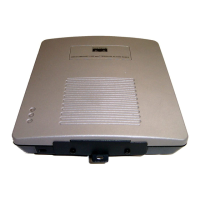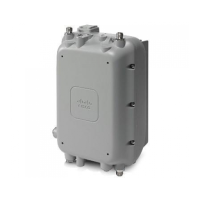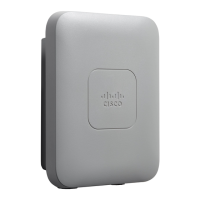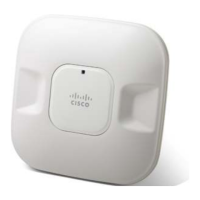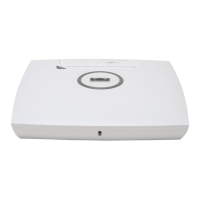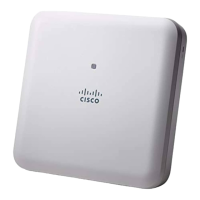Chapter 9 Diagnostics and Troubleshooting
Using Command-Line Diagnostics
9-22
Cisco Aironet 1200 Series Access Point Software Configuration Guide
OL-2159-01
The first group of characters in the packet contents (00c15730, for example) is the
hexadecimal address of the memory buffer that contains the packet. The middle
group of characters (01 00 00 28 01 21 00 28 01 00 6e 65 74 77 6f 72, for example)
is the packet contents in hexadecimal format. The last group of characters
(*...(.!.(..networ*, for example) is an ASCII representation of the packet contents.
For information on interpreting the content of packets sent between the access
point and the RADIUS server, refer to the Internet Society’s RFC 2865. This
document is available at http://www.armware.dk/RFC/rfc/rfc2865.html as well as
on many other websites. The IEEE’s 802.1x authentication standard helps define
the content of packets sent between client devices and the access point and is
available to IEEE members at http://www.ieee.org.
Follow the steps in the “Entering Diagnostic Commands” section on page 9-20 to
open the CLI and enter the :eap_diag2_on command.
:vxdiag_arpshow
Use the :vxdiag_arpshow command to display the access point’s ARP table. The
ARP table might look like the following example:
LINK LEVEL ARP TABLE
destination gateway flags Refcnt Use Interface
----------------------------------------------------------------
10.84.139.129 00:05:31:d3:c0:9 405 1 0 emac0
----------------------------------------------------------------
These are descriptions for each column in the ARP table:
• Destination—IP address of the host entry
• Gateway—MAC address of the destination
• Flags—see Table 9-2 for a list of flags
Table 9-2 Flag Definitions
Flag Value Definition
0x1 Route is usable.
0x2 Destination is a gateway.
0x4 Host of specific routing entry.

